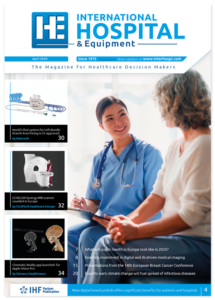Pregnancy’s marathon effect: Study maps yearlong recovery after childbirth
Groundbreaking research analysing over 40 million laboratory tests from more than 300,000 pregnancies has mapped detailed weekly changes across 76 different physiological parameters throughout pregnancy and postpartum. The study reveals that approximately half of the measured parameters take three months to a year to return to baseline levels after childbirth, highlighting the extensive physiological impact of pregnancy.
A comprehensive new study published in Science Advances has uncovered unprecedented insights into the complex physiological dynamics of pregnancy and postpartum recovery, providing the most detailed temporal portrait of maternal adaptations to date.
Researchers from the Weizmann Institute of Science conducted a cross-sectional analysis of 44 million laboratory measurements from more than 300,000 pregnancies, tracking 76 different laboratory tests at weekly intervals from 20 weeks before conception to 80 weeks after delivery.
Prolonged postpartum recovery
One of the study’s most significant findings challenges the conventional understanding of postpartum recovery. Rather than the commonly referenced “fourth trimester” with rapid return to baseline, many physiological parameters demonstrated remarkably slow recovery trajectories.
“Approximately 41% of the tests have long settling times that exceed 10 weeks,” the researchers reported. Among these slower-to-recover parameters were liver functions such as aspartate transaminase (AST) and alanine transaminase (ALT), which took about six months to normalise, and alkaline phosphatase (ALP), which required a full year to stabilise.
Professor Uri Alon, corresponding author of the study, explained: “This study presents detailed cross-sectional temporal trajectories of pregnancy and postpartum physiology. These trajectories reveal prolonged recovery times and overshoot effects of many tests after delivery, preconception dynamics of many tests, and perturbed tests in pregnancy complications at unprecedented detail.”
The researchers documented a phenomenon called hysteresis, where the trajectory of physiological changes during postpartum recovery follows a different path than during pregnancy. This indicates that postpartum adaptation represents a distinct physiological process rather than simply reversing pregnancy-related changes.
Overshoots and undershoots after delivery
The high temporal resolution of the dataset revealed intriguing patterns in how various physiological parameters respond to childbirth. The researchers identified four distinct profile patterns across the 76 tests, with many demonstrating dramatic overshoots or undershoots immediately following delivery.
These rebound effects can be explained by compensatory physiological mechanisms that develop during pregnancy and remain active immediately after delivery. The researchers cite thyroid function as an example, where thyroid mass grows during pregnancy to increase hormone production capacity, but takes months to normalise after birth, causing overshoot dynamics in thyroid hormones.
Preconception changes and health behaviours
The precision of the dataset allowed researchers to detect significant changes in approximately one-third of the measured parameters before conception, between 60 to 38 weeks before delivery. These included a marked rise in folic acid levels, consistent with supplement use before pregnancy, as well as reductions in inflammation markers such as C-reactive protein.
“The ability to detect preconception changes that may correlate with health behaviours represents an important opportunity for understanding preventive health measures before pregnancy,” the authors noted.
Distinctive signatures of pregnancy complications
The study also examined three common pregnancy complications: gestational diabetes, preeclampsia, and postpartum haemorrhage, revealing distinctive temporal profiles for each condition compared to healthy pregnancies.
Interestingly, in many cases, the physiological differences between complicated and healthy pregnancies were more pronounced before conception and after delivery than during gestation itself. For gestational diabetes, 17 of the 20 significantly different tests showed changes during preconception, with 12 differing statistically only during this period.
“This is interesting given that tests for diagnosing pathologies such as gestational diabetes and preeclampsia are done during gestation,” the researchers observed.
Implications for clinical practice
This unprecedented dataset provides a valuable resource for understanding the systemic physiology of pregnancy and postpartum recovery. The findings have significant implications for maternal healthcare, suggesting that postpartum monitoring and support may need to extend beyond the conventional six-week check-up.
The study’s limitations include its cross-sectional nature, which the authors suggest should be complemented by future longitudinal studies that can assess individual pregnancy trajectories and potential subtypes.
“We hope that the present dataset will lead to a better understanding of pregnancy and postpartum biology and inspire similar studies of other crucial physiological processes that unfold over time,” concluded the research team.
Reference:
Bar, A., Moran, R., Mendelsohn-Cohen, N., Kohanim, Y. K., Mayo, A., Toledano, Y., & Alon, U. (2025). Pregnancy and postpartum dynamics revealed by millions of lab tests. Science Advances, 11, eadr7922. https://doi.org/10.1126/sciadv.adr7922


